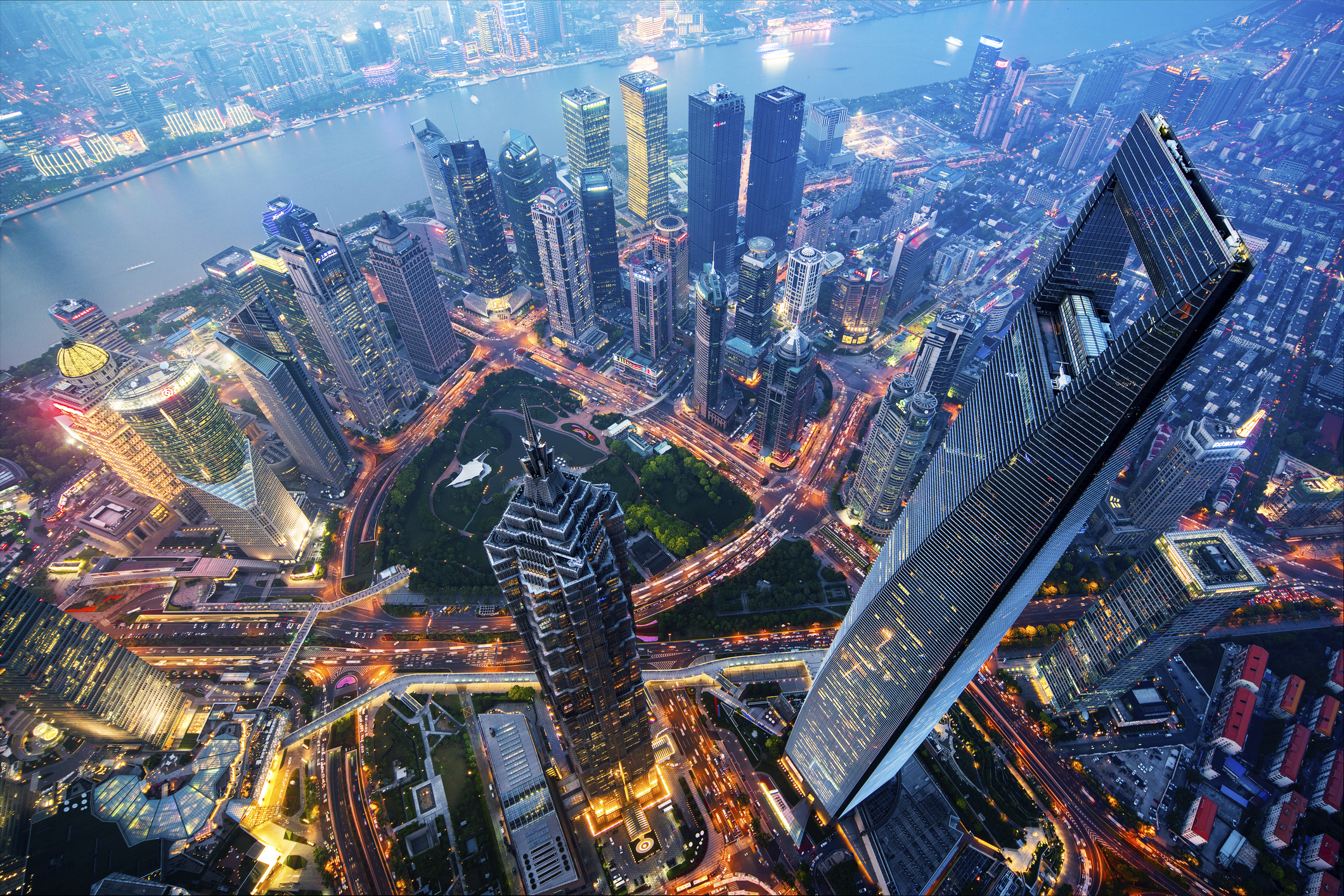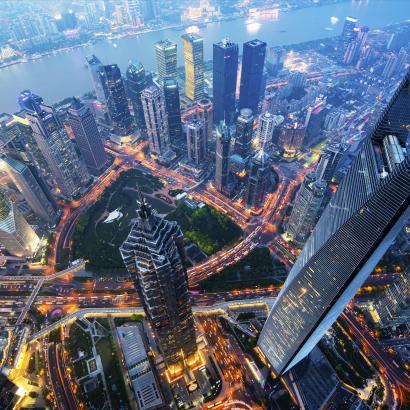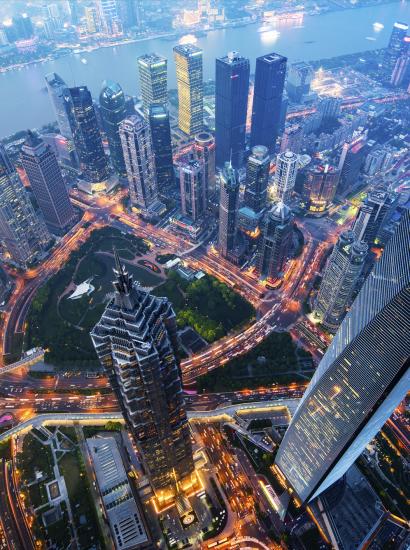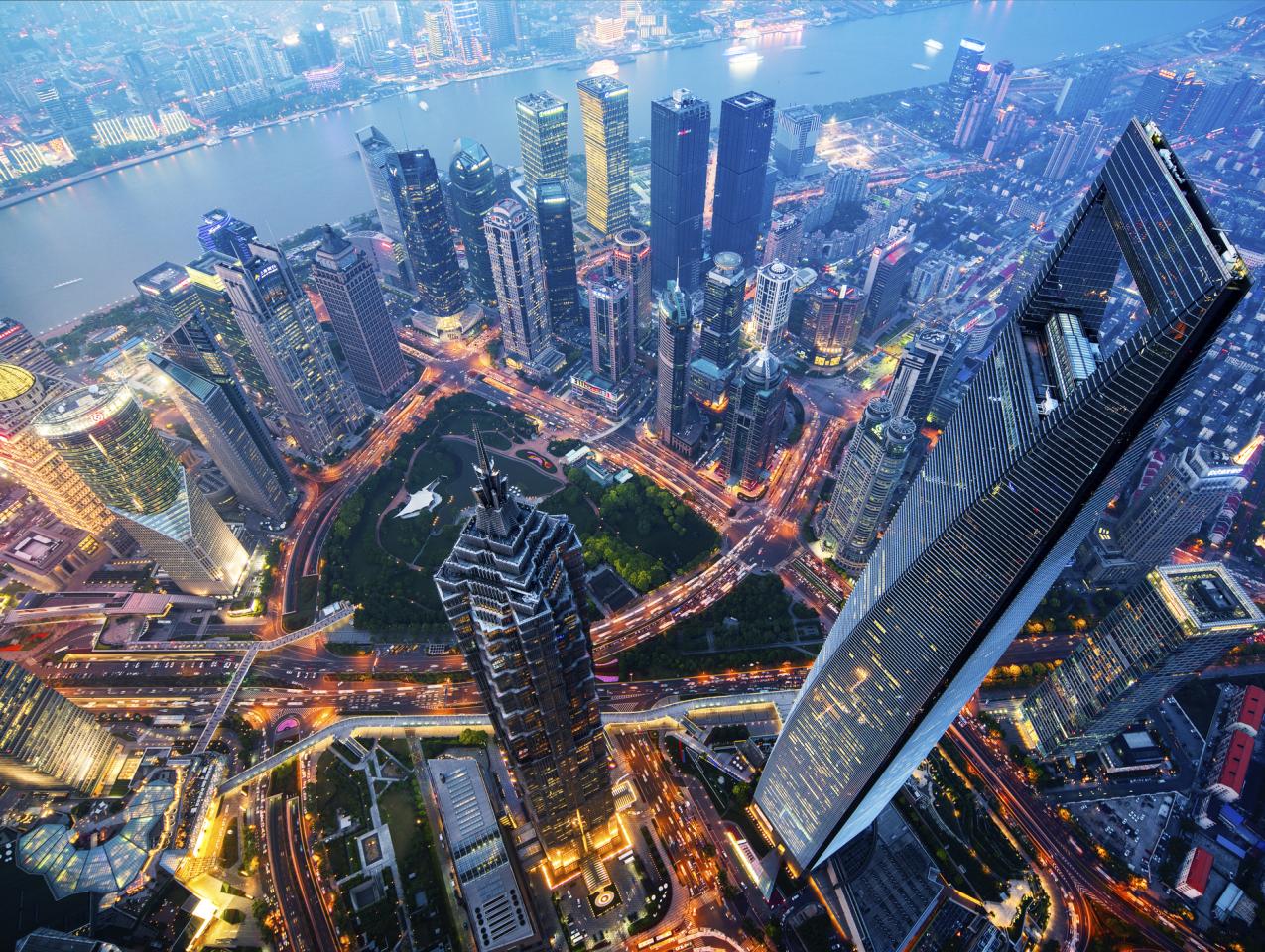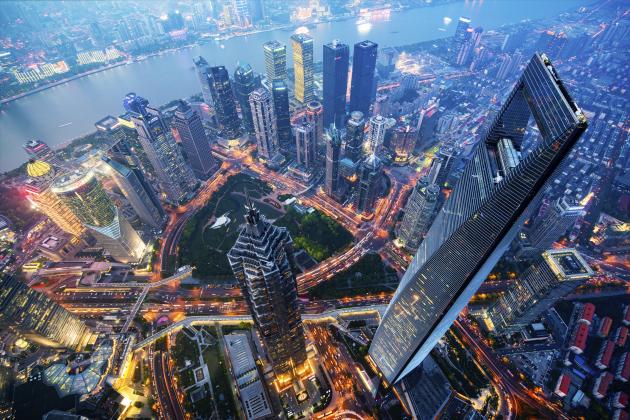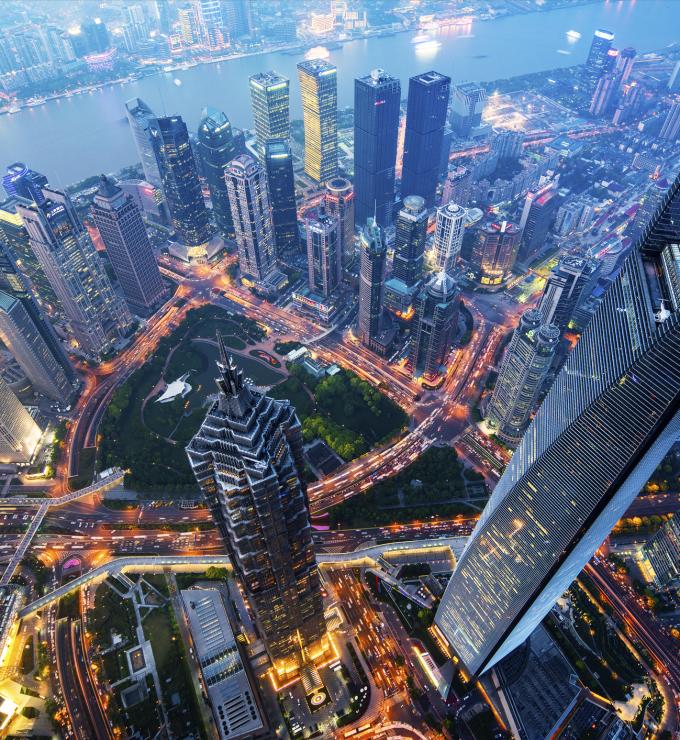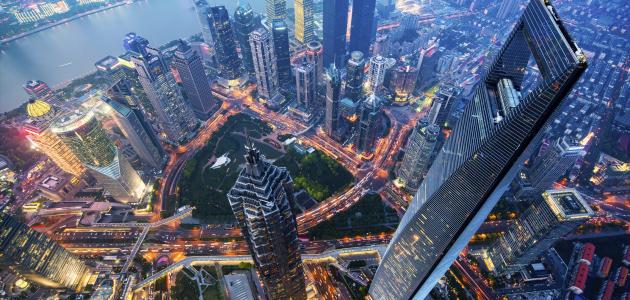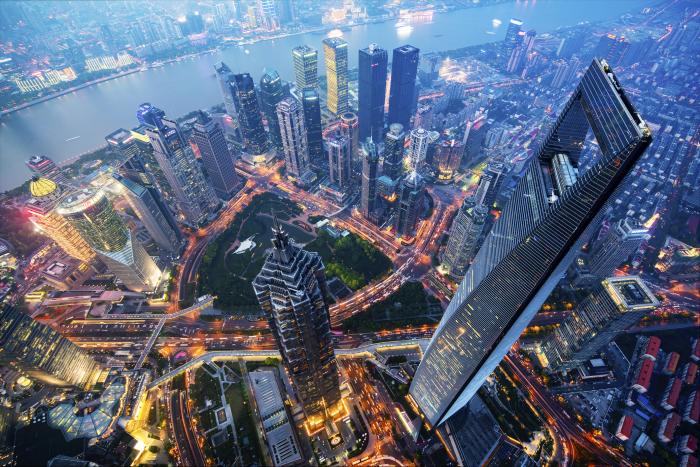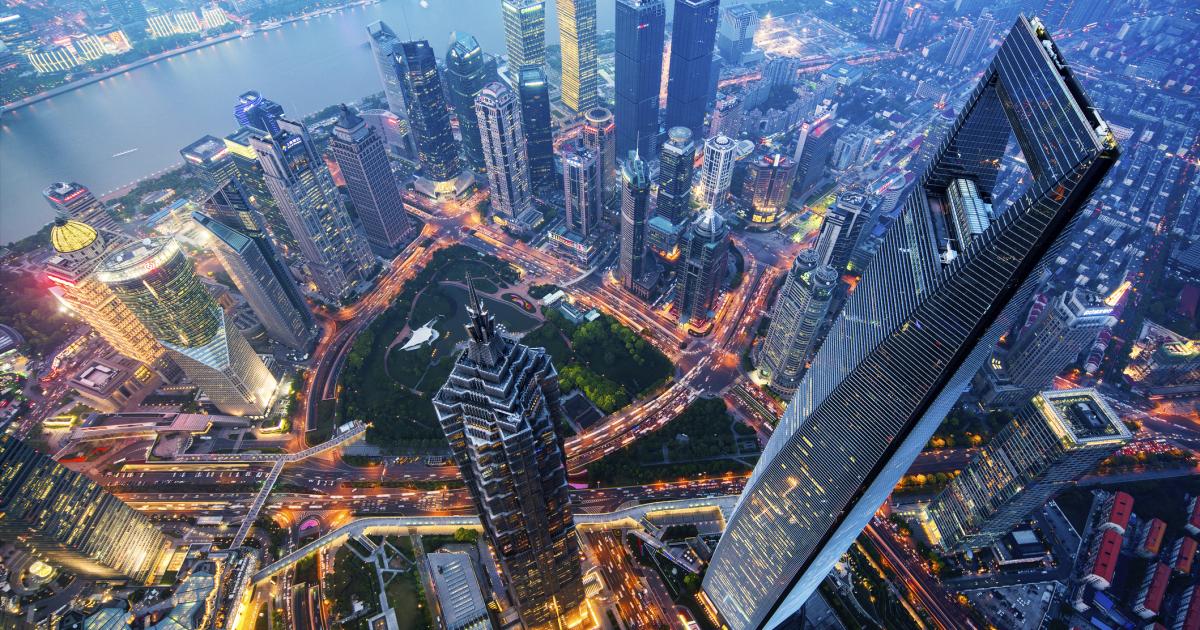Innovation is the primary driving force behind development; it is the strategic underpinning for building a modernized economy.
We should aim for the frontiers of science and technology, strengthen basic research, and make major breakthroughs in pioneering basic research and groundbreaking and original innovations. We will strengthen basic research in applied sciences, launch major national science and technology projects, and prioritize innovation in key generic technologies, cutting-edge frontier technologies, modern engineering technologies, and disruptive technologies. These efforts will provide powerful support for building China’s strength in science and technology, product quality, aerospace, cyberspace, and transportation; and for building a digital China and a smart society.
We will improve our national innovation system and boost our strategic scientific and technological strength. We will further reform the management system for science and technology, and develop a market-oriented system for technological innovation in which enterprises are the main players and synergy is created through the joint efforts of enterprises, universities, and research institutes. We will support innovation by small and medium-sized enterprises and encourage the application of advances in science and technology.
We will foster a culture of innovation, and strengthen the creation, protection, and application of intellectual property. We should cultivate a large number of world-class scientists and technologists in strategically important fields, scientific and technological leaders, and young scientists and engineers, as well as high-performing innovation teams.
Xi Jinping’s 19th Party Congress Work Report, October 2017
Introduction
Over the last forty years, China has stunned the world with the brilliant success of its reform and openness policies in modernizing China at a pace never seen before in world history. Forty years after launching these policies, the size of China’s GDP measured in purchasing power parity terms has surpassed that of the United States. Per capita income has skyrocketed but lags behind the OECD countries because of the immense size of China’s population, now numbering roughly 1.4 billion.
Many factors contributed to this record of success. The massive movement of China’s rural population to urban manufacturing jobs vastly increased labor productivity, perhaps by as much as twenty times. The introduction of market forces into China’s hitherto planned economy gave a further boost to productivity since the manufacturing efficiency of China’s private sector exceeded that of the lumbering state-owned enterprises by as much as three times.
Devastated by the Great Cultural Revolution, China’s educational system rose to the challenge, reformed and reorganized itself, and began churning out vast numbers of scientists and engineers, many of whom “plunged into the sea” of private sector enterprises. Hundreds of thousands of China’s best students flooded the West’s premier universities, gaining language skills along with much needed scientific, engineering, and management skills. The attraction of China’s huge domestic market enabled Chinese joint ventures with foreign partners to demand and get access to valuable intellectual property.
The biggest challenge facing China’s leaders is how to sustain this pattern of success in the decades ahead. China’s goal is to raise the country’s per capita GDP to OECD levels by mid-century. They face formidable obstacles. The GDP growth rate has slowed from double digits to the vicinity of six percent, impressive by world standards but barely sufficient to meet China’s ambitious goals. The work force is beginning to shrink. The population is aging rapidly, with a national social welfare system still in the process of formation. Polluted air and water throughout the country now pose major health hazards. Vast areas of China face acute water shortages.
China has detailed ambitious plans for a new leap forward by seizing a leading position in utilizing the capabilities of the information revolution and new leading-edge technologies, such as artificial intelligence and robotics. If China makes significant progress towards fulfilling its ambitious plans to harness artificial intelligence, robots, and other advanced technologies to meet its development goals, the United States for the first time since its rise to global power will face a competitor whose economic, military, and intellectual resources are greater than its own.
China’s Rapid Rise and Development Challenges
In a three-hour speech at the 19th Communist Party Congress, General Secretary Xi Jinping proclaimed China’s rightful return to the center of the world and projected that by 2035 China will “become a country whose comprehensive national power and international influence will be at the forefront.” By mid-century, the People’s Liberation Army is expected to be one of the world’s top-ranked militaries. When these goals are met, “the Chinese nation will stand tall among the nations of the world with an even more high-spirited attitude.”1
Since Reform and Opening (맣몌역렴) in 19792 until 2017, China’s economy grew an average of roughly 10 percent annually.3 According to the World Bank, this was “the fastest sustained expansion by a major economy in history—and lifted more than 800 million people out of poverty.”4 With a population of over 1.4 billion people, China plays an increasingly important role in the global system. China now has the highest foreign exchange reserves globally.5 It also leads the world in terms of manufacturing output.6 According to Deloitte’s 2016 Global Manufacturing Competitive Index, China is the most competitive manufacturing nation in the world.7
China’s precipitous growth over the last quarter century, however, has spawned several challenges that threaten to derail future growth and lead to instability. Some of the challenges are immediate, such as pervasive corruption, unequal wealth distribution, life-threatening air and water pollution, and a slowing economic growth rate. Others are long-term but do not loom far down the road. These include the impact of climate change, escaping the dreaded middle-income trap, and adverse demographics exacerbated by the one-child policy.
Environmental Pollution
Toxic air and water pollution are foremost on the minds of policymakers in Beijing. The emphasis on energy-intensive and high polluting industries to maintain rapid economic growth has culminated in what many term “Airpocalypse”.8 The U.S. Embassy in Beijing reports on air quality in the city based on a monitor to measure PM 2.5 particulates, which are “fine” particulates in the air small enough to directly enter the lungs and blood stream.9 The readings are converted into an air quality index (AQI) that outlines levels of health concern ranging from “good” (0 to 50 reading) to “hazardous” (301 to 700 reading).10 In January 2013, the embassy reported an AQI level of 755, calling it an unprecedented “Beyond Index” reading.11
A 2017 OECD working paper estimated the economic cost of air pollution to China in 2015 at USD $1.5 trillion, equivalent to 7.9 percent of its GDP.12 The RAND Corporation measured the economic costs of air pollution in terms of health impacts and loss of labor productivity and estimated a 6.5 percent loss of China’s GDP each year between 2000 and 2010.13
Water scarcity and pollution is a much more serious problem. China is home to 1 out of every 5 people in the world, but only has 7 percent of the world’s fresh water reserves.14 And it is depleting. According to Columbia University’s Earth Institute, China’s freshwater reserves declined by 13 percent between 2000 and 2009.15 The country had 50,000 rivers with catchment areas of 100 square kilometers or more in 1950s. That number went down to 23,000 in 2013 as a result of agricultural over-use and factory pollution.16
What little water remains is either used to mine and process coal (20%) or for agriculture (about 70%), industries which are heavily concentrated in the arid northeast of China where patterns of rain and snowfall are already being disrupted by climate change.17 Just this past winter, Beijing endured a historic 145 consecutive days (between October 23rd and March 17th) without rain or snow, its longest dry spell in 47 years. The economic loss in 2016 from extreme weather events such as droughts, flooding, and landslides in China was estimated at 503 billion yuan (USD $72 billion),18 up from 421 billion yuan (USD $69 billion) in 2013.19
Demographic Factors
One of the key drivers of China’s rapid economic growth has been the overabundance of young, underemployed workers. This human goldmine meant firms in China had access to a nearly endless supply of cheap labor, which resulted in healthy profit margins that in turn, boosted investment and production. This is no longer the case as the country’s fertility rate plummeted because of demographic policies such as the one-child policy, from a high of 6.4 births per woman in 1965 to a low of 1.5 in 2000.20 Fertility rates ticked up to 1.6 in 2013 (the same year China relaxed the one-child policy) but many experts believe “low fertility is here to stay” with rates remaining below-replacement levels for years to come.21
Less people means a tighter labor market. Although China’s working-age population (people 15-64) is still substantial compared to other economies at just under one billion, experts believe China’s labor pool is shrinking.22 McKinsey Global Institute predicts China’s labor force will peak as early as 2024 and shrink by one-fifth in the next 50 years.23 The diminishing supply of cheap labor will result in higher wages and make Chinese firms less competitive. Exacerbating the problem is the simultaneous increase of pensioners (people over 65) in China. By 2050, there will be 400 million Chinese citizens over 65 and 150 million of these will be over 80 years of age.24 According to Bloomberg, pension contributions by workers stopped covering retiree benefits since at least 2014, forcing the government to make up the difference. With pension expenses rising 11.6 percent to 2.58 trillion yuan in 2016, many consider China’s aging population the “next debt bomb.”25
China’s Planning Process
One of the key strengths of China’s governing system is the role of planning in managing foreseeable contingencies and mitigating the risks associated with them. China’s planning system is constantly running but kicks into full gear every 5 years for the drafting of the Five Year Plan (5YP). The current (13th) YP is the first to be drafted under President Xi Jinping’s watch and reflects not only his desire to make China great again but also a sober recognition of the challenges China faces in the coming years.
The government’s laser-like focus on the environment is on full display in the 13th 5YP. Quantitative targets related to the environment and resources account for almost half of all targets. More importantly, every single target is mandatory.26 The current plan builds on a sea change in public awareness of environmental issues. It was not until after the U.S. Embassy in Beijing started releasing air pollution data that Chinese citizens started to be concerned about air pollution. The Chinese public is now much more knowledgeable and aware about the environmental situation in China and is more vocal about it. They now require not only the monitoring of air pollution and polluting sources, but also clarification of responsibilities and roles of the public and private sectors in addressing environmental issues. The 13th 5YP addresses these concerns head on.
Progress in in the air, literally. The 2013 “airpocalypse” was too obvious to ignore and prompted Chinese Premier Li Keqiang to “declare war against pollution” in 2014.27 Since then, China’s state-backed planning system has led to a dramatic decrease in PM-2.5 levels across the country. According to The Economist, Beijing saw a 54 percent decrease in PM-2.5 levels from 2016 to 2017, while concentrations in 26 cities across northern China saw a 30 percent decrease.28
Made in China 2025
In 2013 the Chinese Academy of Engineering and the Ministry of Industry and Technology lead a research team of 50 scholars and over 100 experts to identify weaknesses in China’s industrial policy. The comprehensive study of China’s manufacturing sector and overall competitiveness was meant to address long term development challenges, such as shrinking productivity and a declining labor pool. Two years later in 2015, the “Made in China 2025” plan was born (hereafter China 2025).
China 2025 is a blueprint on how Beijing plans to transform the country into a “world manufacturing power” and avoid the middle-income trap. The plan identifies and highlights priority sectors that will increase competitiveness in the long-run. These sectors are meant to guide local governments and enterprises in their investment and business decisions, many of which suggest significant policy support for disruptive technologies that fall under the rubric of Artificial Intelligence (AI). These include: Next-generation information technology, high-end numerical control machinery and robotics, energy-saving and new energy vehicles, and biomedicine. Other industries, such as smart grids and new energy vehicles are singled out as areas to improve indigenous research and development.
The major theme running through both the 13th 5YP and China 2025 is sustainable and equitable growth through innovation and advancing technologies. Not surprisingly, both plans identify emerging technologies as a national priority, thus throwing substantial policy support behind the development of artificial intelligence and robotics.
Artificial Intelligence
China and the United States are poised to dominate the world of artificial intelligence for the next several decades. The struggle between them to capture and retain the lead position in AI will widen the gap between them and the rest of the world. AI talent and research labs are widely distributed, but only China and the United States have the huge data sets necessary to train the deep learning-based AI systems of the future. PriceWaterhouseCoopers has estimated that the United States and China are likely to capture 70 percent of the $15.7 trillion that AI will add to the global economy by 2030, nearly half of which will go to China.29 Not surprisingly, of the seven AI giants (Google, Facebook, Amazon, Microsoft, Baidu, Alibaba, and Tencent), four are American and three are Chinese.
China will be a formidable AI competitor to the United States. In large measure, this is because China’s pioneering startup internet companies were able to rise above one of the principal liabilities of a copycat culture, which is the inhibiting effect this has on innovation. Lacking protection for intellectual property, China evolved a three-stage process: 1. Ruthlessly copy or clone a foreign (usually American) internet application to build engineering skills; 2. Adapt the application to suit Chinese conditions; 3. Innovate to stay ahead of competitors who have ripped off your own application in China’s no-holds-barred entrepreneurial marketplace. This process was unethical but effective. China was short of top-flight internet engineering skills but had an abundance of computer-science trained talent. This was the raw material that permitted market conditions in China to generate a host of entrepreneurial skills in a survival of the fittest competitive free-for-all. In the words of Kai-Fu Lee, “Algorithms tuned by an average engineer can outperform those built by the world’s leading experts if the average engineer has access to far more data.” This underscores the importance of big data for AI success, an advantage that China shares with the United States.
China’s rulers are also encouraging heated competition among municipalities for AI investments, a function that is left primarily to the private sector in the United States.
Special note should be made of the lightning-quick spread of mobile payments in China, where in a short three-year period since its first deployment in 2015, people are now paying for groceries, massages, movie tickets beer, and bike repairs with their smart phones. This is generating an enormous harvest of data that can support AI-driven companies in retail, real estate, and other areas.
Robotics
China has been the world’s largest robotics market since 2013, but its robot density still lags behind the global average. China intends to change this. Made in China 2025 identifies the robotics industry as a strategically important sector. It is launching a two-pronged drive: first, to seize a leading position in manufacturing robots by raising the global market share of Chinese-made robots from 31 percent in 2016 to over 50 percent by 2020; and second to raise productivity by promoting robotics-enabled automation in key industries, including automobile manufacturing, electronics, household electrical appliances, and logistics. To further these objectives, the PRC Ministry of Industry and Information Technology announced this year that China has “approved a plan to build a national robotics innovation center, which will focus on tackling common bottlenecks such as human-machine interaction technologies and compliant control.”
The statistics for 2017 are revelatory. China purchased 141,000 industrial robots in 2017, a near 60 percent increase year-on-year. However, nearly three-quarters of these purchases were from foreign companies, who sold nearly 104,000 robots to China that year. 65 percent of the robots sold in China were articulated robots, up two-thirds from the previous year. 42 percent of the robots sold by domestic suppliers were articulated robots, up 35 percent. China’s industrial market for robots is estimated to reach US$5.9 billion by 2020. Robot applications are concentrated in automobile manufacturing, electrical and electronics, rubber plastics, metallurgy, food, chemical engineering, and medicines and cosmetics. Automobile manufacturing uses half of these robots, with over 50 percent in welding applications.30
Some experts believe that the spread of robots in China could subject it to widespread economic and social disruptions because over 25 percent of Chinese workers are still on farms, as compared to less than 2 percent in the United States.31 Others believe that the impact of robots on factory employment will be slowed and mitigated by the difficulty of adapting robots to manufacturing jobs requiring intelligent decisions. In the words of one such expert, “This is because the intelligent automation of the twenty-first century operates differently than the physical automation of the twentieth century. Put simply, it’s far easier to build AI algorithms than to build intelligent robots.”32 This argument rests on a tenet of artificial intelligence known as Moravec’s Paradox, which holds that it is relatively easy for AI to mimic the high-level intellectual or computational abilities of an adult, but it is far harder to give a robot the perception and sensorimotor skills of a toddler.
Military Factors
The implications of breakthroughs in artificial intelligence and robots are best illustrated in the military field, where a sudden technological advance by an adversary could have devastating implications for national security even though the impact on productivity and jobs would be of lesser consequence. Examples from the past include the development of nuclear weapons and intercontinental ballistic missiles, both of which were game-changers in terms of defense concepts.
For seventy years the United States has enjoyed overwhelming air and naval dominance, but it is burdened with legacy systems, many designed a half-century ago, that are likely to be highly vulnerable in the warfare of the future. Such warfare between high-tech opponents is likely to be fought with cutting-edge “smart” combat systems driven by artificial intelligence, with cyber-weapons, and with robots that can operate on the land, in the air, and in and under the seas. Such combat could feature hypersonic weapons, electromagnetic kinetic weapons with muzzle velocities of 5,000 miles per hour, and directed-energy laser-based weapons.
Not surprisingly, China is pouring impressive resources into developing the weapons technologies of the future. It is pursuing the twin goals of having the capability to disrupt and degrade the information systems on which our military depends, while gaining a leading edge in the technologies that can shift the balance of future economic and strategic power. Its successful testing of an anti-satellite weapon in 2007 is indicative of this effort. In a paper published in June 2018, former Navy Secretary Richard Danzig noted the fear among experts on digital technology regarding “our present pervasive (and expanding) dependence on a technology so vulnerable to subversion. Experts know how to achieve information integrity, availability, and confidentiality in small systems, but their ability to secure these essentials does not scale.”33
China is targeting this vulnerability. It is paying particular attention to artificial intelligence and quantum technologies, claiming that it has already tested a quantum radar than can identify stealth aircraft. In testimony to Congress in January 2018, William Carter noted that China’s national strategy anticipates a shift from today’s “informatized warfare” to “intelligentized warfare,” based on gaining a dominant lead in key commercial industries in artificial intelligence, quantum technology, augmented and virtual reality, and robotics.34
Conclusion
Since the first half of the 19th century, China has paid a heavy price for its technological backwardness in comparison with western countries. Its traditional culture stifled innovation. Its military backwardness enabled stronger powers to reduce China to a semi-colonial status. Its economy was deficient in capital and management skills. Its domestic scene was convulsed with insurrections, civil wars, and foreign interventions.
Ironically, recent decades have demonstrated that backwardness can pave the way for giant leaps forward by bypassing the slower development stages of more advanced countries. Chinese productivity was held back for a century by the unsuitability of the Chinese language for typewriters. Now computers have removed that problem, giving China a giant boost in productivity in producing documents and other written materials.
China leaped in a few decades from the wide spread scarcity of wired telephones to a nation-wide cellular system. China is bypassing credit cards by using mobile phones for digital payments (China’s payments via mobile phones during 2017 are estimated to exceed $17 trillion, over fifty times greater than comparable transactions in the United States). Internet penetration is the highest in the world for a developing country. A slow, crowded, and unreliable rail system has been transformed in less than fifteen years to a national system of high-speed trains that would be the envy of any country in the west.
Nevertheless, China faces formidable obstacles in seeking to achieve its centenary goals. For analytical purposes, these can be divided into discreet categories that will contribute to better understanding of their potential impact on China’s future development.
First, there are problems such as an aging population, a declining work force, environmental degradation, a widening gender imbalance, a slowing rate of urbanization, the middle income trap, and the potential for new technologies, if implemented haphazardly, to create widespread unemployment. Such problems have frequently been cited as dimming the prospects for China to achieve its millennial goals. However, daunting as these problems may be, their implications can be anticipated and kept manageable through a disciplined planning process that develops policies and allocates the resources necessary to address them effectively. China has both the experience and the planning institutions to address such problems, provided that the leadership assigns them the necessary priority. Breakthroughs in the new technologies could also be instrumental in successfully traversing the middle income trap.
Second, there are problems such as changes in rainfall patterns and river flows, sea level rise, the melting of the Himalayan glaciers that feed most Asian continental river systems, and the increasing scarcity of the fresh water resources required by China’s massive population. These problems can be anticipated but are on a scale that could readily swamp even a disciplined planning process. Nevertheless, their onset is gradual, and in some cases the disruptive consequences emerge incrementally. Particularly troublesome would be prolonged climate-change-induced drought in key agricultural areas and the problem of inadequate fresh water. Breakthroughs in desalination and water treatment are unlikely to provide solutions on the scale necessary to meet the needs of China’s population. Disputes with down-stream countries dependent on water resources originating in China are also likely to become more acute.
Third, there are external variables over which China has only a limited degree of control. These include unanticipated military conflicts, global recessions or financial crises that adversely affect China’s export markets, disruptions in energy supply lines, or determined efforts by countries such as the United States, individually or within broad coalitions, to hinder China’s modernization process. This latter possibility must now be taken more seriously in the light of recent negative attitudinal shifts in the United States towards China’s modernization process.
Finally, there are domestic imponderables, most centering on the crucial issue of stability and the ability of China’s leaders to shore up the legitimacy of communist party rule. China under Xi Jinping is reversing the direction of the Deng Xiaoping-sponsored reform and openness policies that underpinned its rapid economic development. A key element of these reforms was the retreat of the communist party from its earlier insistence, carried to a ridiculous extreme in the Great Cultural Revolution, on controlling every aspect of the lives of Chinese citizens. For thirty years Chinese have enjoyed significant freedoms in thought and movement.
Now the party is again seeking to tighten ideological controls over the Chinese people and has put on hold the decisions at the Third Plenum of the 18th Central Committee in 2013 to make the market the determining factor in setting prices and allocating resources. This is certain to exacerbate the principal anomaly in China’s development process, which is the contradiction between the party’s success in modernizing the social and economic foundations of the country and its refusal to modernize the political system.
Unlike the Soviet Union, China’s economy is not autarchic. Sustaining rapid economic growth is heavily dependent on unhindered access to foreign sources of energy and raw materials. Moreover, since China’s entry into the WTO in 2001, the country’s burgeoning foreign trade and robust inflows of foreign direct investment have added several percentage points to China’s annual GDP growth. A major challenge for Chinese diplomacy is to ensure that these inputs, essential for sustaining rapid growth, are not disrupted. If China becomes increasingly dependent on domestic repression to maintain stability this could adversely affect China’s progress towards its centenary goals.
To a significant degree, this hinges on the question of whether this reversal of direction under Xi Jinping will ensure stability in the decades ahead or will make China more difficult to govern. Views on this issue differ widely. In an essay on “Central Issues of American Foreign Policy” published fifty years ago, Dr. Henry Kissinger noted that “The dominant American view about political structure has been that it will follow more or less automatically upon economic progress and that it will take the form of constitutional democracy.”35 Dr. Kissinger took issue with both aspects of this proposition, arguing that “the system of government which brought about industrialization—whether popular or authoritarian—has tended to be confirmed rather than radically changed by this achievement.” Nevertheless, variants of the optimistic point of view that rapid economic development leads to political liberalization remain prevalent in the United States, although roundly denounced by denizens of the “realist” school.
The political outlook for China is clouded by the malaise that has afflicted many western democracies, including the United States, in recent years, making them less effective in addressing key governance issues such as rising budget deficits, skewed income distributions, immigration policies, and preserving traditional freedoms in the face of rising terrorist threats. During the 1990s, a convincing case could be made that every modern developed country had a representative form of governance and a market-based economic system. This suggested that the modernization process itself fostered political liberalization. Developments over the last fifteen years, including the global financial crisis in 2008, have made that case less compelling and rekindled the contention that well-managed authoritarian systems can out-perform democracies with market-based economic systems.
Since becoming China’s top leader in 2012, Xi Jinping’s primary challenge has been to restore the legitimacy of communist party rule in a country that has been radically transformed in its economic and social structures by the success of the Deng-launched reform and openness policies. The Bo Xilai scandal in the final year of Hu Jintao’s leadership blatantly exposed the rot of corruption that has infused the party from top to bottom. Xi Jinping’s relentless anti-corruption campaign is seeking to address this problem, but it has barely dented the surface. Nor has it addressed the vast accumulation of wealth in the hands of top communist party power holders.
A central element in his campaign to restore the party’s centrality in managing China’s domestic affairs is Xi Jinping effort to address the admission in the 19th Party Congress work report that “struggles in the ideological field remain complex.” His principal weapon has been his campaign to discredit western models of development and concepts of governance, insisting that everything must have “Chinese characteristics.” This is also reflected in the affirmation that the communist party must be above the law and answerable only to itself.
To force China onto this retrograde path, Xi Jinping is relying on fear and repression to a degree that has no parallels in the last thirty years. Extra-judicial arrests and abductions, tighter controls over Chinese students studying abroad, more restrictive ground rules for foreign travel, massive reeducation campaigns for restive minority populations, all have become features of the new order under Xi Jinping.
Less well appreciated is the fact that China is approaching an important leadership inflection point. Xi Jinping is the last of China’s top leaders with some semblance of revolutionary credentials, in that he is a member of the “red second generation,” i.e., the children of revolutionary leaders. There is no “red third generation.” All previous Chinese communist top leaders either had revolutionary credentials themselves, or were selected by party elders with such credentials, as in the case of Jiang Zemin and Hu Jintao. Xi Jinping’s father, in his early twenties, was deputy commander of the communist guerrilla forces in northwest China when Mao’s weary forces arrived in Yan’an at the end of the Long March.
To cite an American parallel, even well-educated Americans have difficulty recalling the names of the American presidents between John Quincy Adams and Abraham Lincoln. The successors to Xi Jinping will also be persons of lesser stature, meaning their claims to the mantle of leadership will lack any revolutionary underpinning. This was undoubtedly a factor in removing the age limits from the party constitution that would have prevented Xi Jinping from continuing as President of China beyond 2022. There are three leaders on the 19th Politburo that are young enough to serve ten years beyond 2022, but none of them was considered sufficiently capable as a successor to cope with the mounting challenge of shoring up the legitimacy of continued communist party rule in China.
Over the last forty years, this legitimacy has rested on the communist party’s success in providing the stability necessary for the rapid economic development that has brought undreamed of prosperity to vast segments of China’s population. Success in mastering the new technologies may be helpful in moving China out of the middle income trap but cannot assure political stability. That will depend on the quality of China’s leaders and the correctness of their assessment that they can preserve authoritarian rule while continuing to modernize the country.
This poses a major policy challenge for the United States. If China makes significant progress towards fulfilling its ambitious plans to harness artificial intelligence, robots, and other advanced technologies to meet its development goals, the United States for the first time since its rise to global power will face a competitor whose economic, military, and intellectual resources are equal to or greater than its own. But history does not move in straight lines.
China’s domestic contradictions are worsening, but the communist party’s instruments of control and suppression remain strong and under firm party control. Rash predictions of China’s imminent collapse are gathering dust on bookshelves. We cannot assume that tighter political controls in China will prove incompatible with the country’s current vibrant entrepreneurial culture in AI-related fields.36 The key question for the United States is whether efforts to hinder China’s modernization process can be an effective strategy in the absence of a more determined effort to address our own domestic deficiencies.
J. Stapleton Roy is founding director emeritusat the Wilson Center’s Kissinger Institute on China and the United States. He has been the top USenvoy to Singapore, China, and Indonesia, holdingthe rank of "career ambassador."
1 Xi Jinping, “Report at the 19th National Congress of the Communist Party of China (CPC),” (October 18, 2017), http://www.xinhuanet.com/english/special/2017-11/03/c_136725942.htm
2 Deng Xiaoping’s economic reform and open-door policy was adopted at the Third Plenum of the Eleventh Central Committee of the Communist Party in 1978. The reforms were implemented in 1979.
3 “China Overview”, The World Bank, April 19, 2018 available at https://goo.gl/mKwUfy.
4 Ibid.
5 The World Bank Data Catalog.
6 Darrell M. West and Christian Lansang, “Global Manufacturing Scorecard: How the U.S. Compares to 18 Other Nations”, Brookings, July 10, 2018 available at https://www.brookings.edu/research/global-manufacturing-scorecard-how-the-us-compares-to-18-other-nations/.
7 The rankings were based on a survey of international manufacturing CEOs and included 40 countries. The report predicts the United States will overtake China by the end of the decade. It is currently ranked second. Deloitte Global and The Council on Competitiveness, 2016 available at https://goo.gl/fqJXVG.
8 “Beijing’s ‘Airpocalypse’ Spurs Pollution Controls, Public Pressure”, National Public Radio, January 13, 2013 available at https://goo.gl/pWw3ce.
9 U.S. Embassy in Beijing Air Quality Monitor, available at https://goo.gl/QxLsC7.
10 The Index was developed by the U.S. Environmental Protection Agency.
11 Edward Wong, “On a Scale of 0 to 500, Beijing’s Air Quality Tops ‘Crazy Bad’ at 755”, The New York Times, January 12, 2013 available at https://goo.gl/ichuN5.
12 Rana Roy and Nils Axel Braathen, “The Rising Cost of Ambient Air Pollution thus far in the 21st Century: Results from the BRIICS and the OECD Countries”, OECD Environment Working Papers, No. 124, July 19, 2017 available at https://doi.org/10.1787/d1b2b844-en.
13 Keith Crane and Zhimin Mao, “Costs of Selected Policies to Address Air Pollution in China”, The Rand Corporation, 2015 available at https://goo.gl/bz4X5K.
14 “Water and Energy Sustainability”, United Nations Information Brief, 2014 available at http://www.un.org/waterforlifedecade/pdf/01_2014_sustainability_eng.pdf.
15 Renee Cho, “How China is Dealing with its Water Crisis”, Earth Institute-Columbia University, May 5, 2011 available at https://blogs.ei.columbia.edu/2011/05/05/how-china-is-dealing-with-its-water-crisis/.
16 “Desperate Measures”, The Economist, October 12, 2013 available at https://www.economist.com/leaders/2013/10/12/desperate-measures.
17 Choke Point: China, Circle of Blue, available at https://www.circleofblue.org/choke-point-china/.
18 National Bureau of Statistics of China, China Statistical Yearbook, 2017 available at http://www.stats.gov.cn/tjsj/ndsj/2017/indexch.htm.
19 “Costs of Natural Disasters in china Surge to $69 Billion”, Reuters, February 24, 2014 available at https://www.reuters.com/article/us-china-disasters-idUSBREA1N0JW20140224.
20 The World Bank Data available at https://data.worldbank.org/indicator/SP.DYN.TFRT.IN?end=2016&locations=CN&start=1970.
21 United Nations Expert Group Meeting on Policy Responses to Low Fertility, Policy Brief No. 5, November 2-3, 2015 available at https://esa.un.org/PopPolicy/publications.aspx.
22 Gordon Chang, “Shrinking China: A Demographic Crisis”, World Affairs, Vol. 178 No. 1 (May/June 2015).
23 “Can Long-Term Global Growth be Saved?”, McKinsey Global Institute, January 2015 available at https://www.mckinsey.com/featured-insights/employment-and-growth/can-long-term-global-growth-be-saved.
24 “A research agenda for aging in China in the 21st century”, Ageing Research Reviews, Vol. 24, Part B, November 2015.
25 “China’s Next Debt Bomb Is an Aging Population”, Bloomberg News, February 5, 2018 available at https://www.bloomberg.com/news/articles/2018-02-05/china-s-next-debt-bomb-is-an-aging-population.
26 A key function of a 5YP is to provide guidance on how national priorities are to be achieved. This is translated into concrete targets that lay out how progress is measured and evaluated. Whether a target is “predictive” or “mandatory” reveals the government’s priorities in that the latter is in principle, compulsory; unlike predictive targets, mandatory targets are pegged to career advancement in the party. See Oliver Melton, “China’s Five-Year Planning System: Implications for the Reform Agenda”, Testimony for the U.S.-China Economic and Security Review Commission, April 22. 2005.
27 “China to ‘Declare War’ on Pollution, Premier Says”, Reuters, March 4, 2014 available at https://goo.gl/42JhEk.
28 “How China Cut its Air Pollution”, The Economist, January 25, 2018 available at https://goo.gl/oSRrCK.
29AI Super-Powers: China, Silicon Valley, and the New World Order, Kai-Fu Lee, Houghton Mifflin Harcourt, 2018.
30 See “The Robotics Industry in China, May 14, 2018, by I-Ting Shelly Lin.
31 See The Rise of the Robots, by Martin Ford.
32AI Super-Powers: China, Silicon Valley, and the New World Order, Kai-Fu Lee, Houghton Mifflin Harcourt, 2018.
33 “Technology Roulette: Managing Loss of Control as Many Militaries Pursue Technological Superiority,” Richard Danzig, Technology & National Security, June 2018.
34 Statement Before the House Armed Services Committee, Subcommittee on Emerging Threats and Capabilities: “Chinese Advances in Emerging Technologies and their Implications for U.S. National Security,” A Testimony by: William Carter, Deputy Director and Fellow, Technology Policy Program, January 9, 2018.
35 This essay was first published in “Agenda for a Nation,” The Brookings Institution, Washington, D.C., 1968. It was subsequently included in From American Foreign Policy: Three Essays by Henry Kissinger, W. W. Norton, New York. 1969, pp. 51-97.
36 For a more in depth look at this questions see: End of an Era: How China’s Authoritarian Revival is Undermining Its Rise, Carl Minzner, Oxford University press 2018







